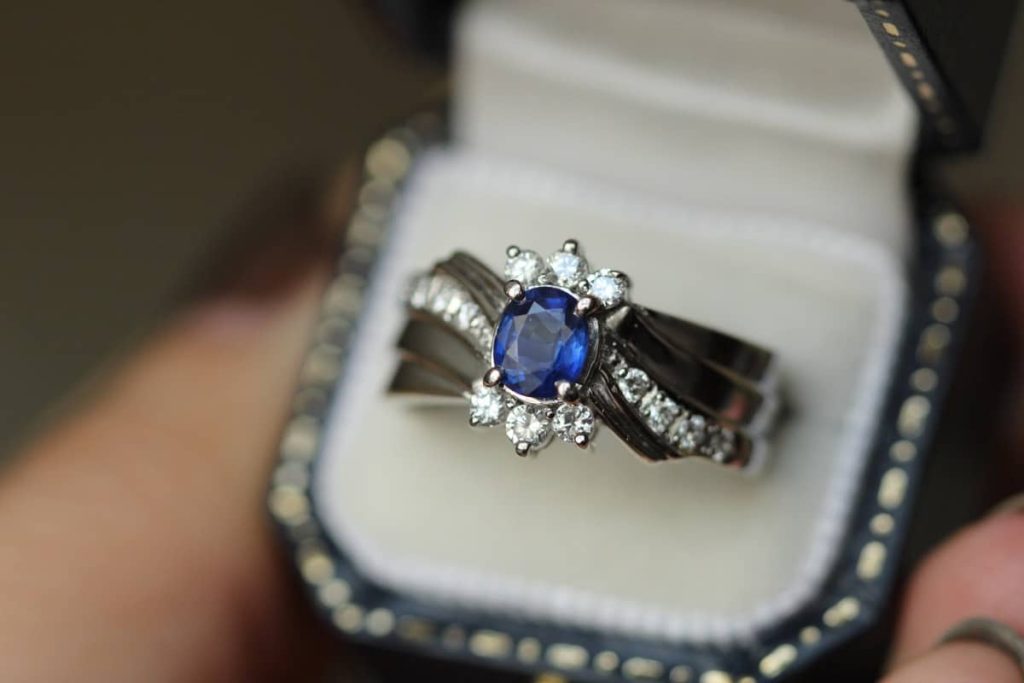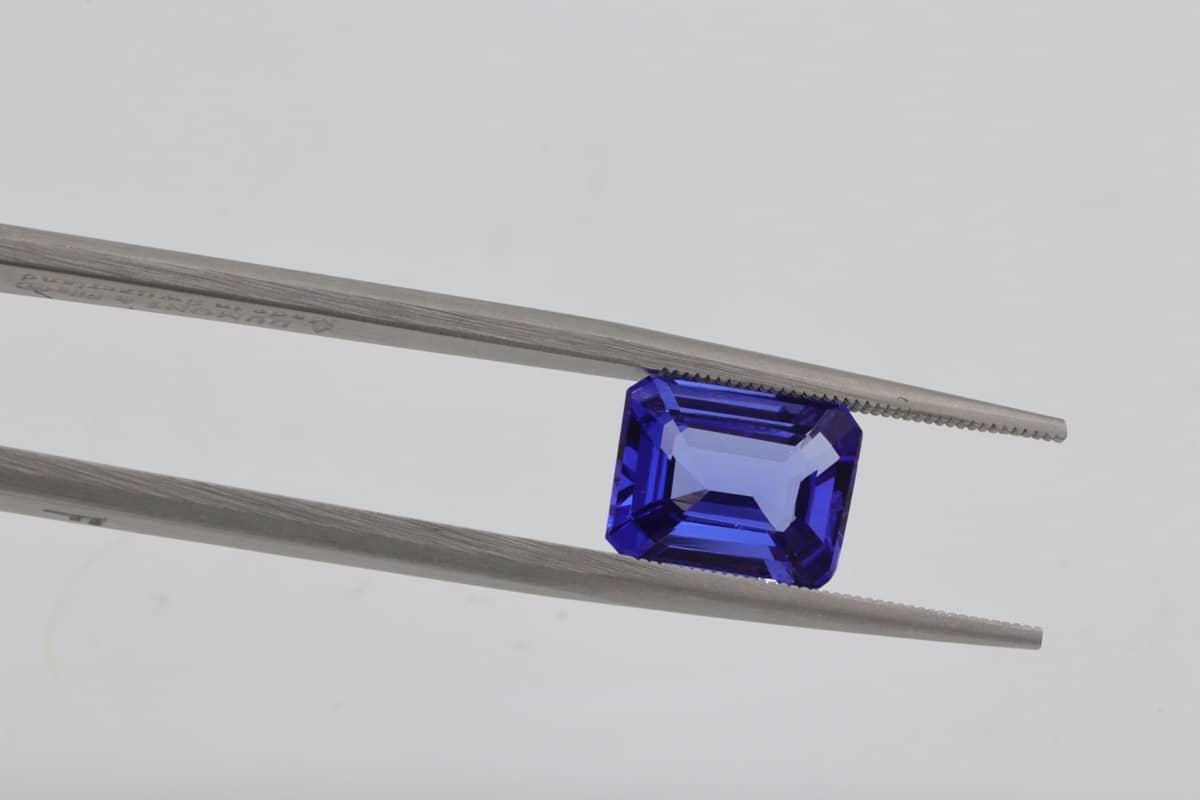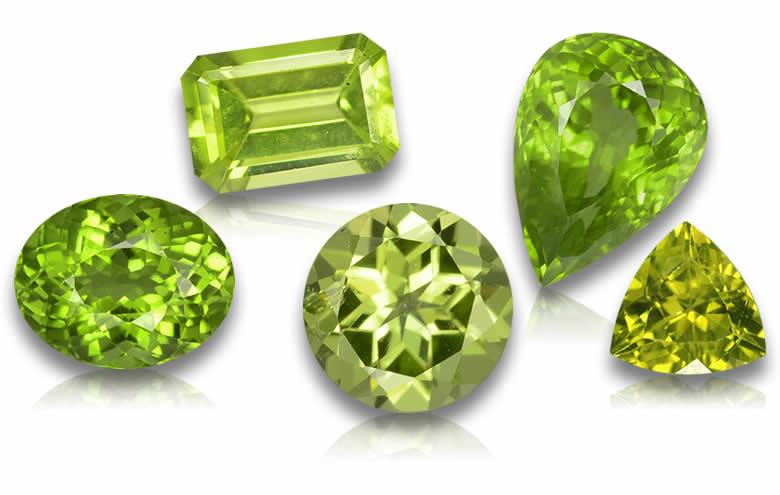Quick info about Sapphire Birthstone
- Official birthstone: September
- Colors: Typically blue, but can also be found in various colors except red
- Meaning: Wisdom, loyalty, nobility, and divine favor
- Zodiac signs: Virgo and Libra
- Mohs hardness: 9
Birthstones have long captivated our imagination and hold deep significance in various cultures around the world. These precious gemstones, assigned to different months, are believed to possess unique powers and attributes that influence one’s personality and destiny. The tradition of birthstones dates back thousands of years, with origins rooted in ancient civilizations like the Babylonians, Egyptians, and Romans.
The Definition and Significance of Birthstones
Birthstones are gemstones that correspond to a person’s birth month. They are often worn as jewelry or carried as talismans for their supposed metaphysical properties. These stones are thought to bring luck, protection, and enhanced well-being to those who wear them.
The selection of specific gemstones for each month is based on historical customs, cultural beliefs, astrological influences, or even biblical references. Throughout history, birthstones have been associated with various qualities such as healing properties, spiritual connections, or symbolizing certain virtues.
Their popularity has endured through generations due to their inherent beauty and the belief in their mystical abilities. Birthstone jewelry holds sentimental value as well since it can serve as a personal talisman or a cherished gift celebrating one’s birth month.
A Brief Overview of September Birthstone – Sapphire
Sapphire is the exquisite gemstone designated as the birthstone for September. Renowned for its mesmerizing blue hues that range from deep midnight shades to vibrant cornflower tones, sapphire has captured humanity’s fascination for centuries.
This magnificent stone derives its name from sappheiros—a Greek word referring to lapis lazuli or blue-colored stones. Considered one of the “Big Three” gemstones alongside diamonds and rubies, sapphire boasts a rich history woven into mythology and royal traditions alike.
Revered by ancient civilizations as a stone of protection and wisdom, sapphire was believed to guard its wearer against harm and bring spiritual enlightenment. Its enduring allure continues to captivate gem enthusiasts, making it highly sought after in the world of fine jewelry.
Ancient beliefs and legends surrounding sapphire
In ancient times, sapphires were regarded as sacred gemstones with mystical powers. The vibrant blue color of sapphires was believed to be a direct reflection of the heavens, making them highly coveted. Many civilizations associated sapphires with divine powers and protection.
The ancient Persians believed that the earth rested on a giant sapphire, which contributed to the sky’s blue hue. Moreover, in Indian mythology, sapphires were considered to be sacred stones that possessed magical properties.
It was believed that wearing a sapphire would bring spiritual enlightenment and wisdom. In addition to its association with spirituality, sapphires were also thought to possess healing properties.
It was believed that they could alleviate ailments related to the eyes and promote mental clarity. The allure of sapphires extended beyond their spiritual connotations; they were also revered for their supposed ability to ward off evil spirits.
In medieval Europe, it was common for individuals to wear sapphire amulets or carry them as talismans for protection against negative forces. These beliefs further enhanced the mystique surrounding this captivating gemstone.
Royal connections and sapphire’s association with nobility
Sapphires have long been associated with nobility due to their remarkable beauty and rarity. Throughout history, many renowned rulers and members of royal families have owned magnificent sapphire jewelry pieces.
One notable example is the British royal family’s collection of exquisite blue sapphires. Queen Victoria received a stunning sapphire brooch as a wedding gift from Prince Albert in 1840, solidifying the gemstone’s status as a symbol of love and fidelity among royals.
Another famous royal connection is that of Princess Diana’s engagement ring, now worn by Catherine, Duchess of Cambridge. This iconic ring features a dazzling blue sapphire surrounded by diamonds, captivating the world with its elegance and regal charm.
Famous sapphires owned by royals throughout history
The world has witnessed the possession of extraordinary sapphires by various monarchs. One such example is the Stuart Sapphire, which was once a prominent feature in the British Crown Jewels. This colossal blue sapphire, weighing an astonishing 104 carats, was originally owned by King James II and later passed down through generations of British monarchs.
An equally renowned sapphire is the Star of India, currently housed in the American Museum of Natural History. This stunning star-shaped sapphire weighs an impressive 563 carats and boasts a rich blue hue.
With its fascinating history dating back to ancient times in Sri Lanka (formerly Ceylon), this gemstone has captivated audiences worldwide. These exceptional gemstones’ association with royalty not only elevated their desirability but also cemented their status as timeless symbols of prestige and power.
Geology and Formation of Sapphires
Explanation of Sapphire as a Variety of Corundum Mineral
Sapphire is a mesmerizing gemstone that belongs to the corundum mineral family, which consists primarily of aluminum oxide (Al2O3). Corundum is renowned for its exceptional hardness, ranking 9 on the Mohs scale, second only to diamond.
What differentiates sapphire from other corundum varieties like ruby is its vibrant range of colors, including the famous blue hue. While red corundum is specifically referred to as ruby, all other colors fall under the umbrella term “sapphire.” This diverse palette makes sapphire an incredibly versatile gemstone.
Factors Influencing the Formation of Sapphires
The formation of sapphires occurs deep within the Earth’s crust under intense geological conditions. Temperature, pressure, and chemical composition are crucial factors in facilitating their creation. Typically, sapphires form in metamorphic or igneous rocks such as basalt or granite.
High temperatures ranging from 600 to 1,200 degrees Celsius are necessary for their formation. These extreme conditions lead to crystal growth over an extended period.
In addition to temperature and pressure, the chemical composition plays a vital role in determining whether sapphires will form. The presence of aluminum oxide (Al2O3) along with trace elements such as iron and titanium within specific geological environments enables the growth of these precious gemstones.
The Role of Trace Elements in Color Variation
One fascinating aspect that sets sapphires apart from other gemstones is their remarkable color range. Various trace elements present during the crystal’s formation imbue sapphires with different hues.
For instance, a blue sapphire owes its coloration to traces of iron and titanium impurities within its crystal lattice. The intensity and shade of the blue color depend on the specific concentration of these trace elements.
Lighter hues may occur due to lower iron or titanium content, while deeper blues indicate higher concentrations. Similarly, other colors like yellow, pink, and green result from different combinations of trace elements present during sapphire formation.
Understanding the geology and formation of sapphires provides a deeper appreciation for their beauty and rarity. The intricate interplay between temperature, pressure, chemical composition, and trace elements contributes to the creation of these captivating gemstones in all their splendid variations.
Physical Characteristics
The physical characteristics of sapphires are truly enchanting, making them one of the most beloved gemstones in the world. One of the fascinating aspects of sapphires is their wide range of colors.
Although blue sapphires are undoubtedly the most popular variety, these precious gems can be found in an array of hues including yellow, pink, green, and other fancy colors. The color variations in sapphires have captivated gem enthusiasts and collectors for centuries.
Blue Sapphires – The Most Popular Hue
Blue sapphires hold a special place among gemstone aficionados due to their timeless beauty and captivating allure. The factors influencing the intensity and shade of blue in a sapphire are manifold. One crucial aspect is the presence of trace elements within the crystal lattice structure.
For instance, titanium impurities contribute to a vibrant blue hue while iron can impart a darker tone. Rarity further enhances the desirability of blue sapphires.
However, it’s important to note that natural untreated blue sapphires are exceptionally rare. Many commercial-grade blue sapphires undergo heat treatment to improve their color and clarity, making unenhanced stones highly sought after by discerning collectors who value authenticity.
Yellow, Pink, Green, and Other Fancy Colored Sapphires
Sapphire’s allure isn’t limited to its classic blue variety; it comes alive in an exquisite palette of fancy colors as well. Yellow sapphire shines with brilliance reminiscent of golden rays from the sun’s embrace while pink variations exude femininity and grace.
Green sapphire captivates with its earthy charm that evokes lush forests and verdant landscapes. The causes for different hues in non-blue varieties of sapphires can be traced back to the presence of different trace elements.
For example, iron impurities result in yellow sapphires, while chromium gives rise to pink and green hues. The rarity and desirability of fancy colored sapphires lie in their unique and captivating shades that make them stand out in the world of gemstones.
Transparency levels: From Opaque to Transparent
When it comes to transparency, sapphires span a wide spectrum. Some sapphires possess an opaque or translucent appearance due to various inclusions or structural irregularities within the gemstone. However, others showcase exceptional transparency, allowing light to pass through almost effortlessly.
In general, gem-quality sapphires are prized for their transparency as it enhances their brilliance and overall visual appeal. Transparent sapphires are often used for faceted gemstones where they can exhibit maximum sparkle and play of light.
Cutting Styles: Traditional Shapes vs Innovative Cuts
The cutting style employed on a sapphire significantly impacts its final appearance and visual impact. Traditional shapes such as round brilliant, oval, cushion, and emerald cuts have long been favored for their timeless elegance and ability to showcase a stone’s inherent beauty. However, innovative cuts have gained popularity in recent years due to their ability to bring out the unique characteristics of each individual stone.
These unconventional cuts include princess cut with its sharp corners or intriguing hexagonal shapes like trillions or radiant cuts that infuse contemporary glamour into traditional designs. Regardless of cutting style, skilled lapidaries strive to maximize a sapphire’s brilliance by ensuring precise angles and proportions that allow light to reflect optimally within the stone.

Gemological Properties
The Hardness Scale: Ranking on the Mohs Scale
When it comes to gemstones, including sapphires, one of the key factors to consider is their hardness. Hardness determines a gemstone’s resistance to scratching and abrasion.
The Mohs scale of mineral hardness, developed by Friedrich Mohs in 1812, is a widely used reference for comparing the hardness of different minerals. It consists of ten minerals ranked from softest to hardest, with talc being the softest at number one and diamond being the hardest at number ten.
Sapphires hold an impressive position on this scale with a rating of nine out of ten. This exceptional hardness makes sapphires highly durable and suitable for everyday wear.
Their resilience allows them to withstand daily activities without significant damage or scratches. However, despite their impressive hardness, it is important to remember that even sapphires can still be vulnerable to chipping or cracking if subjected to extreme force or improper handling.
Clarity Characteristics: Natural Inclusions
Natural inclusions are an inherent part of any gemstone’s journey from formation deep within the Earth’s crust. These unique internal characteristics contribute to a gemstone’s individuality and often serve as nature’s signature within each stone. Sapphires typically contain various types of inclusions that vary in size, shape, and position within the stone.
Common inclusions found in sapphires include needles, feathers, color zoning (variation in color intensity), fingerprints (growth marks), and rutile silk (fine needle-like crystals). These inclusions can provide clues about a sapphire’s origin and formation process while also influencing its appearance.
While some inclusions may affect a sapphire’s clarity, they do not necessarily diminish its beauty or desirability. In fact, certain types of inclusions, such as rutile silk, can create captivating visual effects like the star phenomenon in star sapphires.
Birthstone Quality Criteria for Evaluating a Fine Sapphire
When it comes to evaluating the quality of a sapphire as a September birthstone, several factors come into play:
- Color: The color of a sapphire is paramount. The most sought-after and highly prized color is a rich velvety blue with excellent saturation. However, it should be noted that variations of fancy-colored sapphires also hold their own charm and desirability.
- Clarity: While absolute clarity without any inclusions would be ideal, the presence of natural inclusions is common and does not necessarily detract from the overall beauty. Clarity should be evaluated based on how visible or distracting the inclusions are to the naked eye.
- Cut: The cut determines how light interacts with the sapphire and influences its overall brilliance and sparkle. Well-proportioned cuts maximize light return and showcase the gemstone’s true potential.
- Carat Weight: Carat weight refers to a sapphire’s size. While larger sizes are generally more desirable, rarity and quality take precedence over size alone when evaluating fine gemstones.
Sources & Mining
Mining of Sapphires
Mining for sapphires is a meticulous process that requires careful planning and skillful execution. The primary sources of sapphire deposits are found in various countries worldwide, including but not limited to Sri Lanka, Myanmar (Burma), Australia, Thailand, and Madagascar. In these regions, mining operations range from small-scale artisanal mines to large commercial ventures.
The extraction of sapphires involves both traditional methods and modern techniques. In traditional underground mining, miners delve into the earth to access the gem-rich gravel beds or rock formations where sapphires are deposited.
This labor-intensive process requires patience and expertise as miners manually dig deep tunnels and use hand tools to extract the precious gemstones. Modern mining methods employ heavy machinery and advanced technology to enhance efficiency and productivity while minimizing environmental impact.
Open-pit mines are employed in areas where the gem-bearing rocks or gravel deposits are close to the surface. Large-scale machinery is used to remove layers of soil, overburden, or debris to access the sapphire-rich layers below.
Sustainable Practices & Ethical Mining
In recent years, there has been a growing concern about sustainability and ethical practices within the gemstone industry. Various organizations have emerged with a focus on promoting responsible sourcing of gemstones, including sapphires. These initiatives aim to ensure that mining operations adhere to strict environmental regulations and fair treatment of workers.
Moreover, some mines prioritize reforestation programs by planting trees in areas affected by mining activities or work closely with local communities to provide education, healthcare, and infrastructure development opportunities. By implementing sustainable practices such as water conservation measures during extraction processes or using renewable energy sources for power needs at mines, efforts are made towards reducing carbon footprints associated with sapphire mining.
Conclusion
Sapphires hold a significant place in the world of gemstones due to their rich history, stunning physical characteristics, and diverse color variations. The sourcing and mining of sapphires require a delicate balance between preserving the environment and ensuring ethical practices. With the increasing demand for responsibly sourced gemstones, efforts towards sustainability are gaining momentum in the industry.
By appreciating the beauty of sapphires while being conscious of their origins, consumers contribute to a more sustainable and ethical future for gemstone mining. So, whether you admire sapphire jewelry for its captivating allure or are fascinated by its geological formation, remember that supporting sustainable practices can help preserve the enchanting world of sapphires for generations to come.





